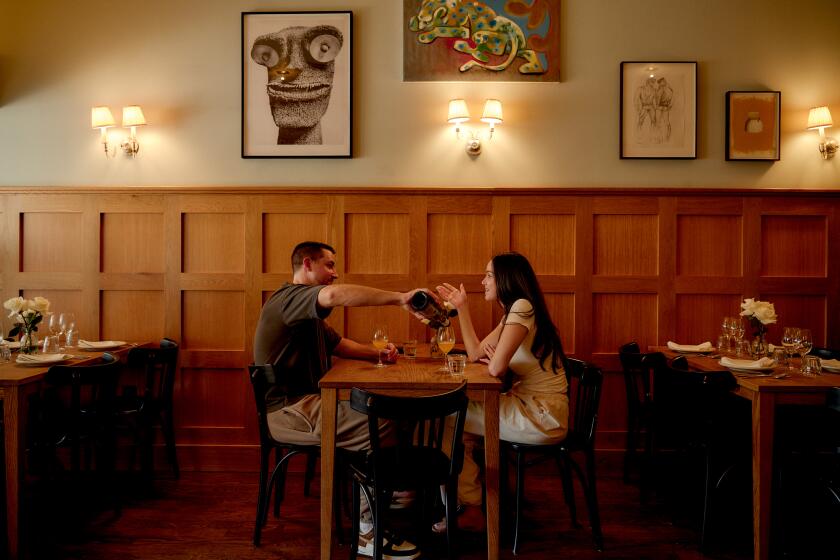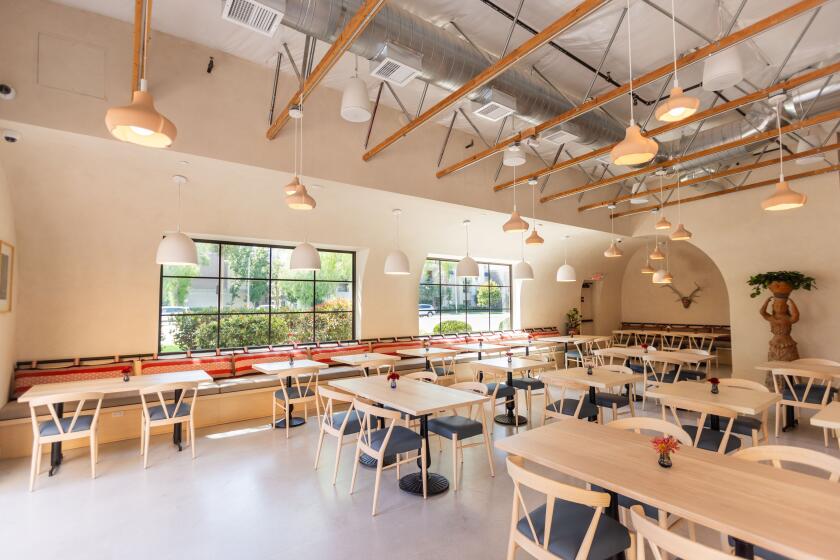Winery of the Year: Château Palmer
America is almost certainly the best place on earth for wine-lovers. Our wineshop shelves, restaurant wine lists, and online catalogues are chockablock with bottles (and cans and boxes) of the fermented grape in every price range, from every corner of the winemaking universe - from world-renowned trophy bottles to lesser-known bargains with funny names. Pinot grigio, sauvignon blanc, chardonnay, riesling, merlot, cabernet sauvignon, pinot noir, syrah, and all the other standbys are available in almost unfathomable profusion. Formerly obscure (at last around here) grape varieties like grüner veltliner, torrontès, malbec, and tempranillo are now commonplace - and more adventuresome oenophiles are reaching for assyrtiko, garganega, timorasso, pinotage, mencia, and nero d’avola. The vintages of Italy, France, Germany, Spain, California, Oregon, and Washington; of Austria, Chile, Argentina, Australia, New Zealand, and South Africa are everywhere, and if those aren’t enough for you, you can try the wines of Virginia, Michigan, Idaho, Texas, Arizona (a real up-and-comer), Moldova and Croatia, Lebanon and Turkey, Switzerland and Luxembourg, Mexico and India and Japan.
Nobody knows exactly how many wineries or wine-producing entities there are around the world, but some estimates put the number as high as 2 million. In case that sounds unlikely to you, consider that there are more than 900,000 designated vineyards in Italy alone (not every one corresponding to a winery, of course, though many of them do) and about 28,000 actual wineries in France. Even the U.S., which is new to winemaking compared to our European counterparts, boasts at least 8,000 commercial wine producers if not more.
That all adds up to a huge amount of wine to try to get a handle on - but try we have. In early 2015, for the first time, we honored a Winery of the Year. The idea was to celebrate one wine producer from anywhere in the world that has consistently made fine wines over a substantial period of time - but that has also served as an innovator and/or inspiration in the world of wine, whether dynamically or simply by example.
To arrive at our selections, we asked a panel of wine writers and bloggers (including our own regular wine contributors), sommeliers and wine merchants, and wine-savvy chefs and restaurateurs to offer us their nominations for this honor. Our winner the first time we essayed this competition was not the newest, most obscure favorite of America’s coolest wine stewards, but the Napa Valley’s Smith-Madrone Vineyards & Winery, vintage 1971, known primarily for its exemplary cabernet sauvignon and unexpectedly sophisticated riesling. The following year, the honor went to another Californian, Tablas Creek - a leader in the propagation and use of Rhône varietals in California and an eloquent champion of viticological diversity and sustainable vineyard practices in the Paso Robles region. Last year, the winner was the immensely influential Marchesi Antinori, the modern-day descendent of wine-growers who first set up shop in Tuscany in 1180.
This year’s nominations included plenty of Californians, as usual, but we also received strong entries from Oregon, New York, Italy, Portugal, Spain, France, Australia, South Africa, Israel, and Georgia (the nation, not the state). The most provocative (and, frankly, tempting) nomination we received this year came from frequent Daily Meal contributor Anne Montgomery, who nominated not a single winery but an entire region.
“This year,” she wrote, “I humbly nominate the more than 90 wineries and related businesses of the Paso Robles wine country... Both individually and under the aegis of the Paso Robles Wine Country Alliance Foundation, winemakers throughout Paso Robles began fundraising within days of the first reported fires, reaching out to those colleagues in Sonoma, Napa, and Mendocino counties who were damaged and devastated by fire. So far, the Foundation has contributed more than $100,000 to the relief efforts, and fundraising is ongoing. When I visited Paso Robles several years ago, I was struck by the extraordinary cooperation and support among winemakers there, a generosity of spirit that enriched and benefitted both established wineries and struggling new vineyards. This latest collaborative effort is typical of the Paso Robles ethos, and I can think of no finer way to honor it than by declaring its participants, collectively, ‘Winery of the Year.’”
Karen Moneymaker, senior editor at The SOMM Journal spoke up for Paso Robles, too, opining that “no wine region in the U.S. is as exciting to watch grow and evolve.” (She particularly hails Riboli Family Wine Estates, an offshoot of the only remaining winery in downtown Los Angeles, San Antonio). We agree with Moneymaker about the region, and admire the efforts and communal spirit of its winemakers, but these were lone nominations, and we went for something closer to consensus.
That consensus was arrived at by the editors of The Daily Meal, with the invaluable assistance of Montgomery and Moneymaker and several dozen wine authorities. Some of those prefer to remain anonymous, but we can publicly acknowledge the assistance of our regular wine contributors Roger Morris, Gabe Sasso, Summer Whitford, Stacy Slinkard, Rashmi Primlani, and John Tilson of The Underground Wineletter, as well as David Sawyer, wine director at Lilia in Brooklyn; Gina Goyette, beverage manager for Big Night Entertainment Group (including Explorateur Restaurant and Café in Boston); Chip Coen of M.S. Walker Inc. Fine Wine & Spirits in Norwood, Mass.; and chef-restaurateurs Robert Del Grande of Café Annie in Houston, Lydia Shire of Scampo in Boston and Cindy Pawlcyn of Mustards Grill and Cindy’s Backstreet Kitchen in the Napa Valley.
Here, then, are our two runners-up and our Winery of the Year:
Honorable Mention: Mount Eden Vineyards
This estimable winery in Saratoga, just southwest of San Jose, can trace its origins back to vineyards planted by French immigrant Paul Masson himself in the early twentieth century. It was vines from Masson’s vineyards nearby that a former stockbroker named Martin Ray, who was to become one of the great eccentric pioneers of the modern California wine industry, planted on the site of what is now Mount Eden, overlooking the Santa Clara Valley, in 1943. Ray, a brilliant but erratic personality, made some of the state’s best (and occasionally some of the strangest) chardonnays, cabernet sauvignons, and pinot noirs before losing title to his land in 1970. A group of investors took over Ray’s winery and vines shortly thereafter, renaming it Mount Eden Vineyards. Longtime Mount Eden fan John Tilson exaggerates only slightly, then, when he tells us that “For over 50 years Mount Eden Vineyards has produced world-class cabernet sauvignon, chardonnay, and pinot noir from the same location! I am aware of no other winery in the world that can make such a claim.” For honoring and maintaining tradition, for the consistent fine quality of its wines, and for having resisted fad and fancy by continuing to produce wines that can only be called “classic,” we acknowledge Mount Eden Vineyards as our second runner-up for the year.
Honorable Mention: Ceretto
Riccardo Ceretto established the beginnings of this first-rate Piedmontese winery more than 80 years ago. His sons subsequently acquired some of the finest vineyard sites in the Barolo and Barbaresco regions, eventually totaling about 400 acres worth of bluechip property. Today, a third Ceretto generation runs the operation, bringing Ceretto into the twenty-first century by gaining organic certification for their vines and continuing to research and improve methods of growing grapes and making wine. The winery’s top-of-the-line offerings, including Asili and Barnadot from Barbaresco and Brunate, Cannubi San Lorenzo, and the legendary Bricco Rocche from Barolo, are among the leading lights of the region, not cheap, but worth it - and their more approachably priced bottlings, like the crisp white Blangé Arneis and the expansively fruity Rossana Dolcetto d’Alba, make for enjoyable drinking vintage after vintage. Ceretto’s “respect for our natural ecosystem and trailblazing of a socially responsible environment for our future generations [is] embraced in all aspects of Ceretto’s daily operations,” notes Rashmi Primlani. Added points go to the winery for the Langhe Ceretto Prize, an annual literary award they established in 1991 to honor books on food or wine, and for ownership of the Michelin-three-star Piazza Duomo in Alba, one of Italy’s best (and most refreshingly unpretentious) gastronomic landmarks.
Winery of the Year: Château Palmer
This famous property in Bordeaux‘s Margaux appellation, classified as a third growth in 1855 but today often considered to be of second-growth status, is famous for its rich, elegant wines, typically a more-or-less half-and-half blend of merlot and cabernet sauvignon with a touch of petit verdot. In recent years, though, the estate has become much more than just the producer of this classic Margaux. It has become, says Roger Morris, a truly groundbreaking winery under the direction of Thomas Duroux. A protégé of Robert Mondavi (he worked on the Napa Valley legend’s aborted Languedoc winery project), Duroux made Marchese Lodovico Antinori’s signal Ornellaia, one of the best and most famous of the so-called super-Tuscans, before arriving at Palmer in the mid-2000s. There, he not only continued to produce the property’s signature wine at the highest level, but expanded its repertoire. He created a second wine that was emphatically not a “second wine” in the sense of being a lesser sibling to Château Palmer but rather a different expression of the same terroir, a bit lighter on the merlot. Discovering a few bottles of a Palmer white wine from the 1920s, he planted three lesser (but permitted) Bordeaux white varieties - muscadelle, sauvignon gris, and the rare lauzet - and produced the first Vin Blanc de Palmer in generations. Recalling the days when Bordeaux reds were sometimes hermitagé (dosed with syrah from the Rhône), he created what he called his XIXth Century Historical Wine, adding syrah to merlot and cabernet sauvignon from the Palmer vineyards. He also led the château into becoming one of the first high-profile Bordeaux wineries to convert to biodynamic agriculture. And his ambitions go still further: “My dream,” he told Morris, “is to build a double-circular organization with 50 families living within and without the [Palmer] estate, where everyone does about everything. While it may never be a perfect model, in the end, I would like to ... blend agronomy, economy, and social care.” For proving that a venerable Bordeaux estate can remain true to its root values while moving forward into the modern world - and by so doing, we would hope, inspire its counterparts to do the same - we salute Château Palmer as our Winery of the Year.
Related Stories
- 2016 Winery of the Year: Marchesi Antinori
- 2015 Winery of the Year: Tablas Creek Vineyard
- 2014 Winery of the Year: Smith-Madrone Vineyards & Winery
More to Read
Eat your way across L.A.
Get our weekly Tasting Notes newsletter for reviews, news and more.
You may occasionally receive promotional content from the Los Angeles Times.










